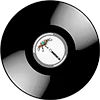
Happy Hardcore: a fast (160–180 BPM), melodic subgenre of ’90s rave music. The UK scene’s golden era, chipmunk vocals, and an aesthetic of euphoria. Complete guide.
Happy Hardcore — a fast, emotive, and feel-good subgenre of electronic dance music that emerged in the UK in the early to mid-1990s. It’s defined by high BPM (160–180), rich melodicism, “happy” synths, chipmunk vocals (sped-up, pitch-raised vocal samples), and that unmistakable rave euphoria.
This style became a symbol of early rave culture, its neon visuals, smiley icons, and dancefloor freedom. Unlike aggressive hardcore, Happy Hardcore aims for joy, positivity, and melody while keeping the breakneck pace.
Historical context
1991–1993
The roots of Happy Hardcore take shape in UK raver communities, drawing on:
-
piano house,
-
jungle techno.
1994–1996 — the “golden era”
The style conquers:
-
Helter Skelter and Dreamscape parties,
-
early UK labels (Reinforced, Kniteforce, Hectic Records).
This is when the canonical sound arrives — drum breaks, pianos, vocal hooks, and pitched-up voices.
Late ’90s
Influences from UK garage, trance, and later hardstyle shape a new production generation.
2000s
Happy Hardcore evolves into:
-
UK Hardcore,
-
Freeform Hardcore,
-
Makina (Spain),
-
Eurodancish Hardcore (Germany/Netherlands).
Signature sonic traits
Tempo
160–180 BPM, sometimes even faster.
Melodicism
High, bright synth lines, bold leads, piano chords/choirs.
Fast vocals (chipmunk vocals)
Samples are sped up and pitched up — a hallmark of the genre.
Breaks and kicks
-
early-’90s breakbeat patterns,
-
a four-on-the-floor foundation,
-
aggressive hi-hats.
Emotionality
The music centers on happiness, lift-off, and rave nostalgia.
Evolution and subgenres
Breakbeat Happy Hardcore
Strongly rooted in the early UK rave scene.
Vocal Happy Hardcore
Maximum focus on big vocal hooks.
Trancecore (Freeform Hardcore)
A fusion with Trance featuring:
-
epic pads,
-
arpeggios,
-
dramatic, full-bodied arrangements.
UK Hardcore (modern heir)
Contemporary, thicker, and more EDM-oriented.
Geography and cultural hubs
-
United Kingdom — home base, epicenter
-
Netherlands — club support and festival scene
-
Germany — Hands Up/Eurodance influences
-
Japan — a later second wind via the doujin scene
Visual aesthetics
-
smileys,
-
neon,
-
glow-stick culture,
-
candy-style accessories,
-
punchy gradients.
In the ’90s the look was unabashedly carnivalesque.
Audience
Happy Hardcore is especially loved by:
-
old-school ravers,
-
seekers of positive vibes,
-
fans of UK Hardcore and Makina,
-
fast-EDM devotees.
Production techniques
Synths
-
supersaw leads,
-
synth pianos,
-
resonant filters.
Drum section
-
sidechain for a “breathing” groove,
-
dense, fast snare grids.
Processing
-
dotted-note delays,
-
shimmer reverbs,
-
pitched harmony layers.
BPM formula
160–180 — the sensation of nonstop forward motion.
Influence on other genres
Happy Hardcore helped shape:
-
Nightcore
-
UK Hardcore
-
Freeform
-
Makina
-
Hard Dance
-
Early Hardstyle
-
Hands Up
Artists from the scene influenced the sound of modern EDM and festival trance.
Why people love Happy Hardcore
- instant endorphin rush
- rave-era nostalgia
- distinctive emotional melodicism
- ecstatic tempo
Perfect for:
-
high-energy tasks,
-
fast workouts,
-
pure rave euphoria.
Summary
Happy Hardcore is a powerful, high-speed, and upbeat subgenre that became a foundation of modern rave culture. It raised the BPM bar, made vocals ultra-emotional, and left a deep imprint on the history of Europe’s dancefloors.

